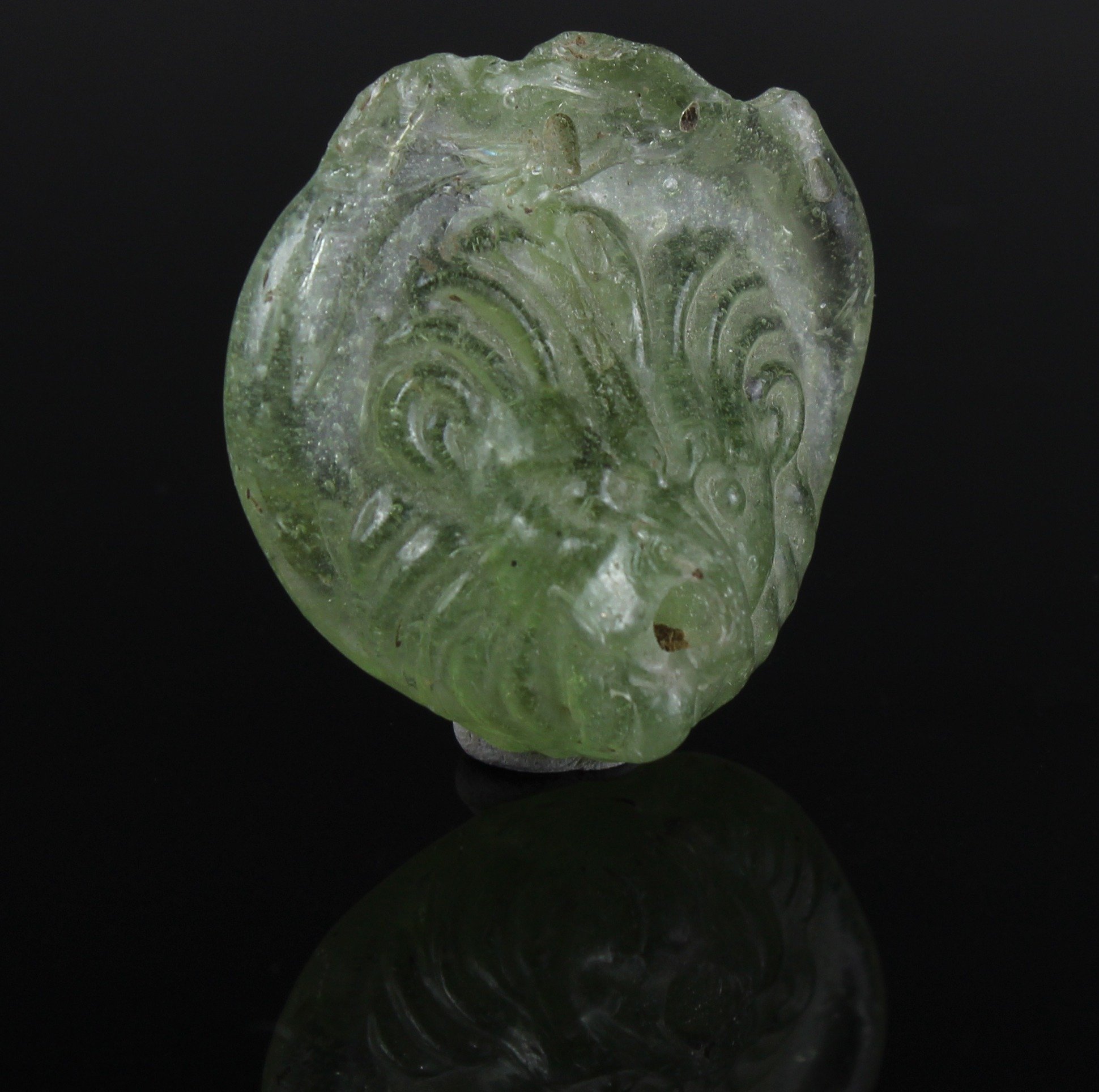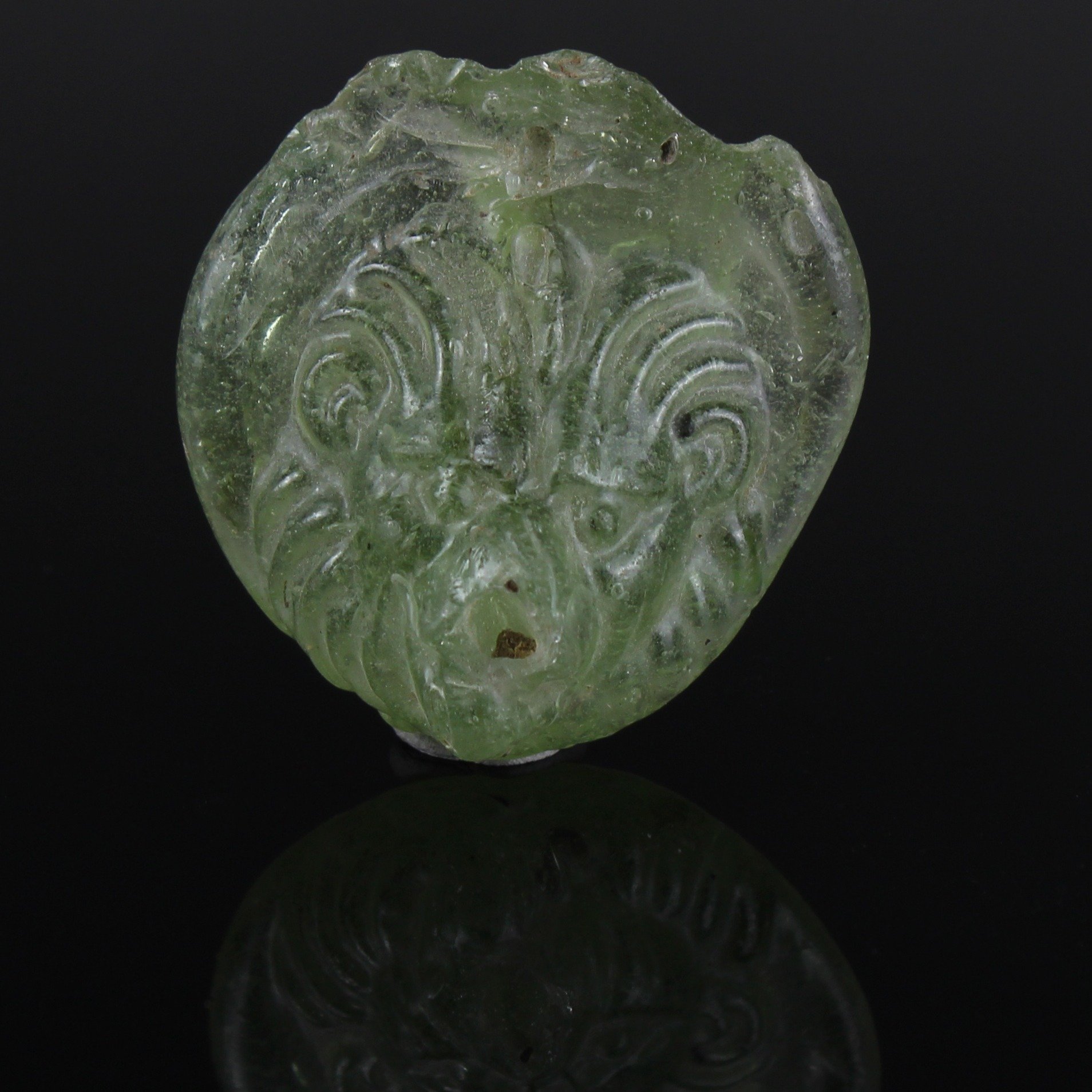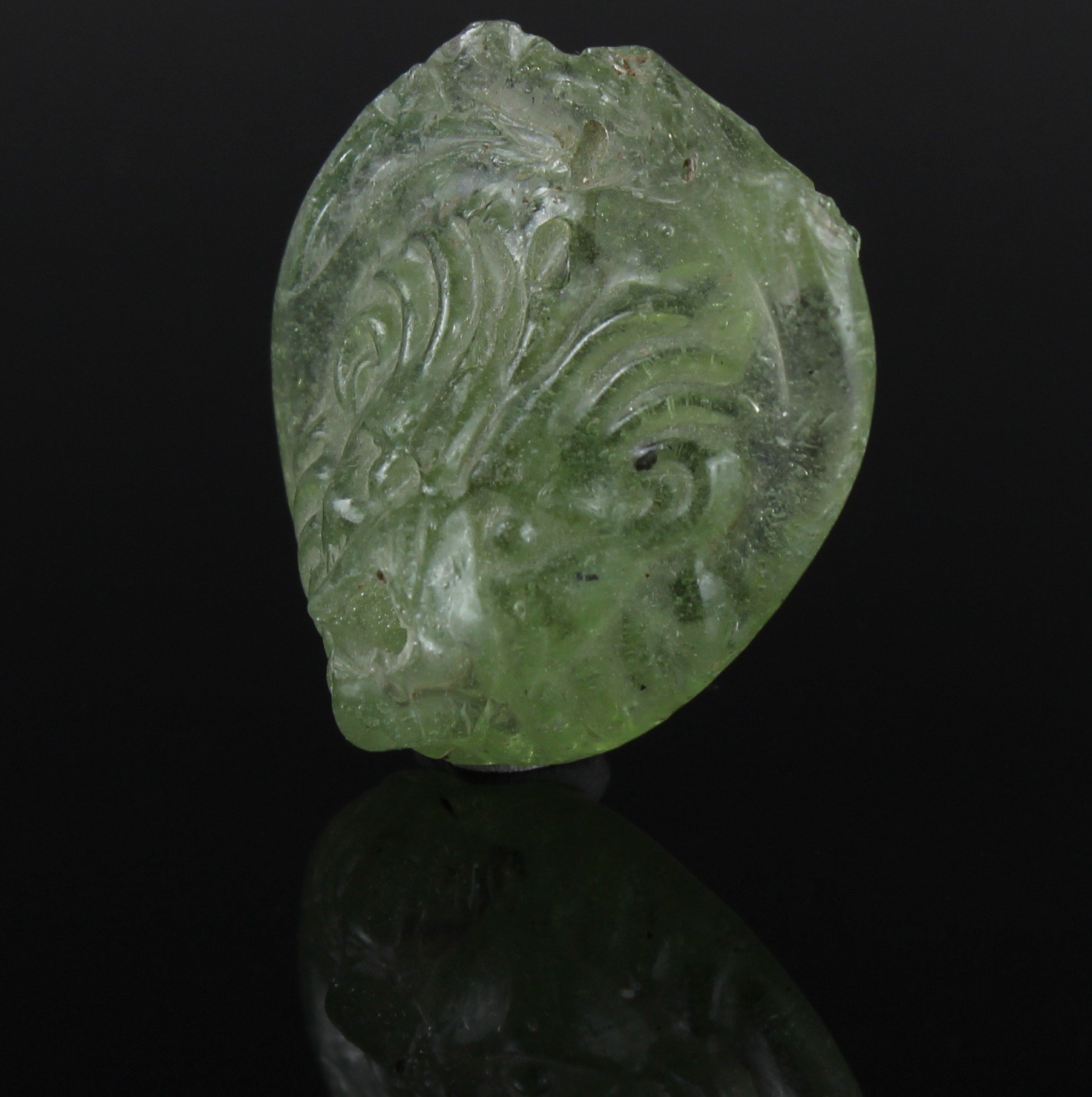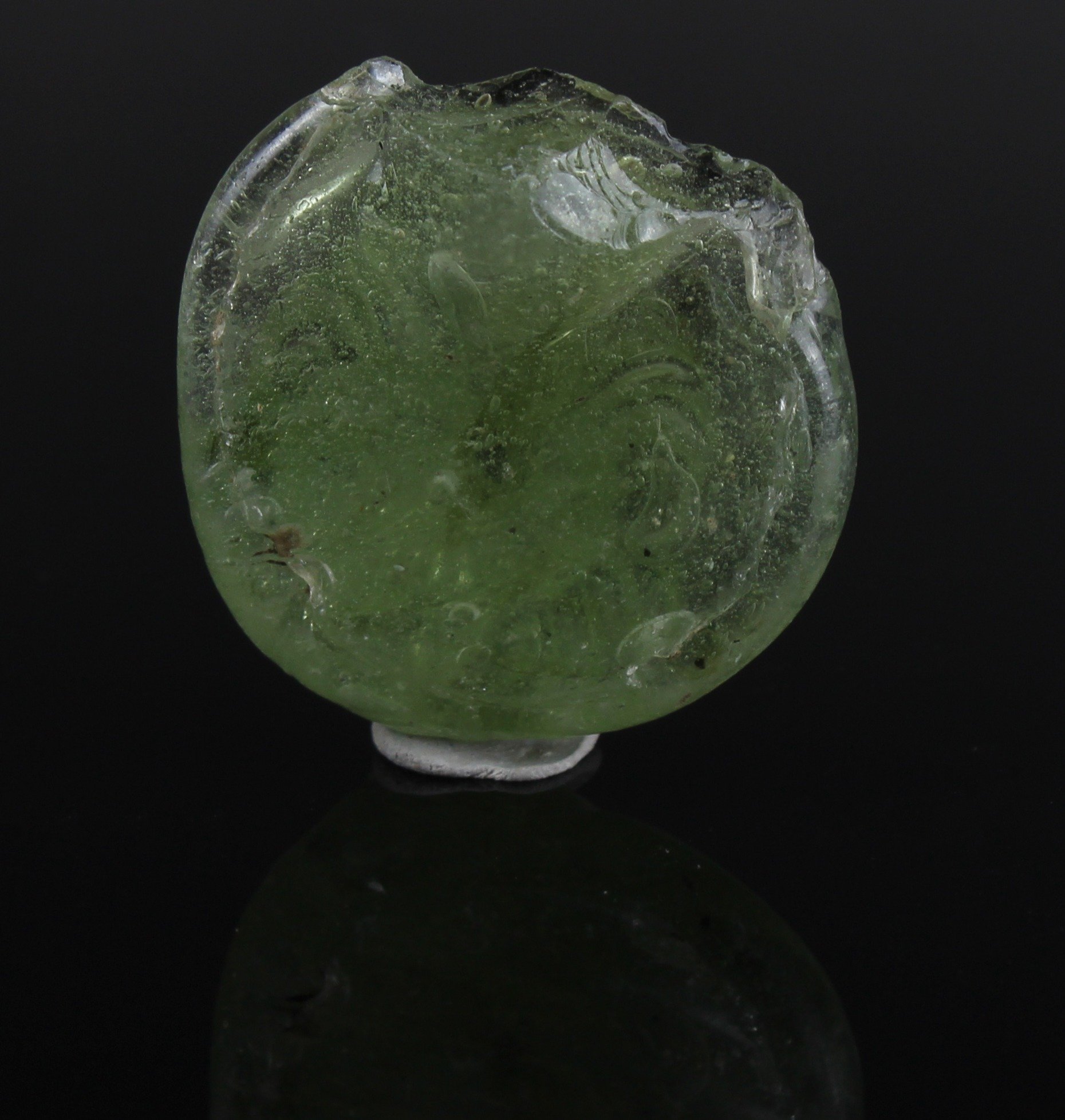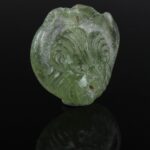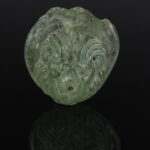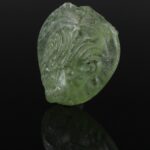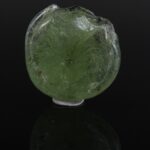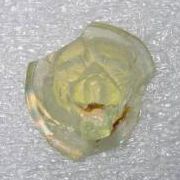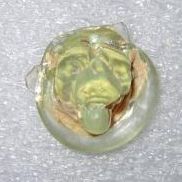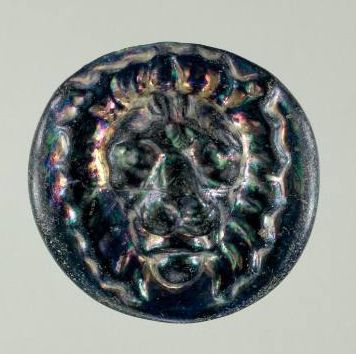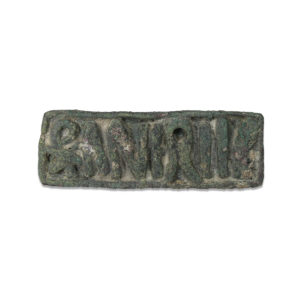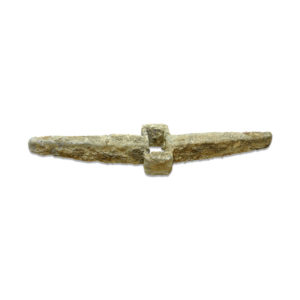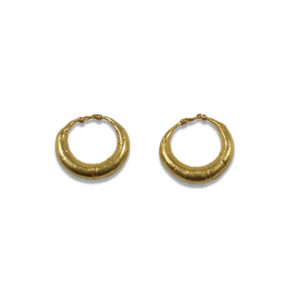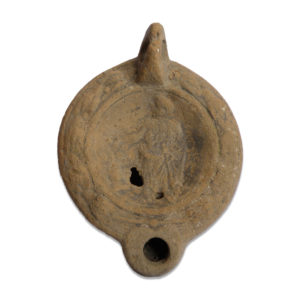Description
| ITEM | Lion medallion |
| MATERIAL | Glass |
| CULTURE | Roman |
| PERIOD | 2nd – 3rd Century A.D |
| DIMENSIONS | 15 mm x 37 mm diameter |
| CONDITION | Good condition |
| PROVENANCE | Ex Shlomo Moussaieff collection, Herzliya Pituah, with export approval 55883 |
These glass applications were a common way to decorate and beautify everyday objects like bronze vases, cups, plates, and jugs.
The Romans had a great appreciation for blown glass and glass art forms. To enhance the beauty of their everyday objects, they would add glass adornments in the form of medallions, figures, or even glass threads and beads. These glass applications not only added aesthetic value to the objects but also reflected the craftsmanship and the taste of the time for detailed decoration.
The glass applications on bronze objects could also have symbolic or functional purposes. Lions, in particular, were considered symbols of protection, and by adding glass lion-shaped medallions to bronze vessels, it could convey the idea that the vessel’s contents were somehow protected or blessed. Additionally, these glass applications might have had religious or spiritual connotations, as there was a belief that lions had the ability to ward off evil spirits.


